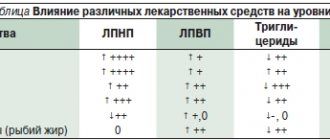Home — For the public
- Map of medical organizations
- Vaccination
- Clinical examination
- Fluorography
- Addresses and opening hours of clinics
- Emergency rooms
- Oncology
- Where to take an HIV test
- Healthy child's office
- Services
- Prevention of CVD
- Disease Prevention
- World Patient Safety Day
- Newspaper "Medical News"
- specialist
- School of Health
— Disease prevention
- HIV infection
- All about vaccination
- All about proper nutrition
- Hepatitis
- Flu
- Dementia
- Schoolchildren's health
- STD
- Tick-borne encephalitis
- Whooping cough
- Measles
- Legionellosis
- Meningococcal infection
- Oncology
- Acute intestinal infection
- Pediculosis
- First aid
- Pneumococcal infection
- Pneumonia
- Prevention of rabies
- Dependency Prevention
- Rotavirus infection
- Diabetes
- Cardiovascular diseases
- Injuries
- Tuberculosis
- Tularemia
- Physical activity
- Obstructive pulmonary disease
- Exotic infections
- Ecology
- Why is swimming in ponds dangerous?
— Cardiovascular diseases — What are cardiovascular diseases?
Cardiovascular diseases (CVD) are a group of organic and functional pathologies of the circulatory system (heart, arteries, veins). Cardiac disorders can be suspected by pain and a feeling of heaviness in the chest, shortness of breath, uneven heart rhythm, and rapid heartbeat. When the vessels of the head and neck are damaged, headaches, tinnitus, and fainting may occur. Peripheral vascular diseases are accompanied by pain in the legs, swelling, and lameness. Most CVDs are extremely life-threatening; if their symptoms appear, you should immediately contact a cardiologist or therapist - he will refer you to the right specialist.
Epidemiology
Cardiovascular (CV) diseases are a serious health problem worldwide due to their high prevalence and high mortality rate. In the world, about a third of all deaths occur from diseases of the circulatory system (85% of them due to heart attack or stroke), more than 75% occur in countries with low and medium levels of economic development. In Russia, the incidence of CVD is more than 19% in the structure of all diseases, mortality is 50%. Experts from the World Health Organization (WHO) predict a further increase in morbidity and mortality from CVD.
People of retirement age are more susceptible to vascular and heart diseases, but over the past decades these diseases have become significantly younger. Thus, coronary heart disease is often first diagnosed at the age of thirty, and from the age of forty it becomes the cause of premature death. Morbidity statistics show that in men the incidence and mortality from cardiovascular pathologies is 1.5 times higher than in women.
WHO activities
Under WHO's leadership, in 2013, all Member States (194 countries) agreed on global frameworks to reduce the burden of preventable NCDs, including the Global Action Plan for the Prevention and Control of NCDs 2013–2020. The plan aims to reduce premature deaths from NCDs by 25% by 2025 through 9 voluntary global targets. 2 of these global goals directly address the prevention and control of CVDs.
Goal six of the Global NCD Action Plan aims to reduce the global prevalence of high blood pressure by 25%. High blood pressure is one of the main risk factors for cardiovascular disease. The global prevalence of high blood pressure (defined as systolic and/or diastolic pressure ≥140/90 mmHg) among people aged 18 years and over in 2014 was about 22%.
To achieve this goal, it is necessary to reduce the incidence of hypertension through national policies that address behavioral risk factors, including harmful use of alcohol, physical inactivity, overweight, obesity and high salt intake. Early detection and cost-effective management of hypertension to prevent myocardial infarction, stroke, and other complications requires a risk-based approach.
Goal eight of the Global NCD Action Plan aims to ensure that at least 50% of eligible people receive drug therapy and counseling (including glycemic control) to prevent myocardial infarction and stroke. Preventing heart attack and stroke using a comprehensive approach that takes into account overall cardiovascular risk is more cost-effective than treating based solely on individual risk factor thresholds and should be part of the core package of services to achieve universal health coverage. sanitary assistance. Achieving this goal will require strengthening key components of the health system, including financing health care services to ensure access to essential health technologies and essential medicines for NCDs.
In 2015, countries will begin setting national targets and measuring progress against the 2010 baselines set out in the Global Noncommunicable Disease Status Report 2014. The UN General Assembly will hold its third high-level meeting on NCDs in 2021 to review countries' progress towards achieving the voluntary global targets by 2025.
Classification of CVD
The most common, socially significant CVDs include:
- Hypertension is a persistent increase in blood pressure.
- Atherosclerosis is the blocking of the arterial lumen by cholesterol plaques. Damage to the coronary vessels leads to coronary heart disease, the arteries of the head and neck to ischemia (lack of blood supply) to the brain, and large arteries of the legs to ischemia of the limb.
- Coronary heart disease is a disorder of the blood supply to the myocardium caused by obstruction (narrowing of the lumen) of the coronary arteries. The acute form of the disease is myocardial infarction.
- Cardiac arrhythmias are disturbances in heart rhythm and conduction.
- Inflammatory heart diseases are lesions of an autoimmune or infectious nature that affect the pericardial sac, muscle layer or internal connective tissue lining of the heart - pericarditis, myocarditis, endocarditis, respectively. Rheumatic carditis is most often recorded.
- Cerebrovascular pathologies are diseases of the blood vessels of the brain. An acute form of circulatory disturbance in the great vessels of the head and neck is ischemic stroke (cerebral infarction). If the integrity of the vascular wall is damaged or incompetent, a hemorrhagic stroke (bleeding in the brain) develops.
- Thromboangiitis obliterans is a progressive closure of the small arteries of the legs (first due to spasm, then associated thrombosis), accompanied by ischemia of the limb.
- Venous thrombosis and pulmonary embolism (PE) are complete or partial closure of the lumen of the veins or the main artery responsible for the blood supply to the lungs with a blood clot.
Significantly less common:
- congenital and acquired heart defects;
- heart tumors;
- systemic vasculitis;
- thromboembolism of the arteries of the systemic circulation (peripheral, mesenteric and others).
Blood tests
A cardiologist may recommend tests for cholesterol, glucose, and uric acid.
These indicators reflect the state of metabolism in the body: fat, protein, carbohydrate. Deviations from the norm for these indicators may indicate an increased risk of stroke or heart attack.
Symptoms that you should pay attention to
First of all, the pressure level. Increased blood pressure is always a sign that you need to see a doctor. Signs such as headaches, redness of the skin, tinnitus, and dizziness can indirectly indicate high blood pressure.
Chest pain, especially associated with walking and physical activity. Chest pain can also appear with increased blood pressure or stress. Such pain most likely indicates heart disease. The pain syndrome can be either constant or appear only during exercise, and subside with rest.
Shortness of breath is another fairly common symptom of heart problems.
It is important to understand that heart disease is often asymptomatic or with mild symptoms. And with age, the risk of their development increases significantly. Therefore, any man over 40 years of age and woman over 50 years of age should regularly visit a cardiologist for preventive care. Come at least once a year, perform an ECG, and see if everything is in order.
Most heart diseases, “caught” at the initial stage, are successfully treated. The contrast between how simple the prevention of cardiovascular diseases is and how serious the consequences they can have is simply amazing!
Why is it necessary to visit a cardiologist and do an ECG during pregnancy? Pregnant women who are registered at the antenatal clinic are sent for an ECG several times during pregnancy, and are also often recommended to consult a cardiologist. In addition, blood pressure is monitored at every doctor’s visit. What is this connected with? Pregnancy is always stressful for the body. During pregnancy, the load on the entire body and, in particular, on the heart increases. The volume of circulating blood increases, and the heart rate increases. This can provoke the development of hypertension, heart defects, and rhythm disturbances. Therefore, it is important to constantly monitor the woman’s condition in order to stop the disease in time and prevent the development of serious complications. It often happens that these conditions appear during pregnancy and disappear after childbirth.
Causes of CVD development
Damages of the heart and blood vessels are multifactorial pathologies - they arise against the background of several predisposing conditions. The main cause of the vast majority of cardiac and cerebrovascular pathologies is an increase in the level of low-density lipoproteins (LDL) in the blood. An increase in their concentration leads to excess cholesterol, which forms plaques on the walls of blood vessels, narrowing their lumen.
An important role in the development of CVD is played by hereditary predisposition - those at risk are those whose immediate relatives (brothers, sisters, parents) have the corresponding disease. The likelihood of developing cardiovascular pathologies is increased by diabetes mellitus, kidney and thyroid diseases, infections (most often streptococcal - sore throat, scarlet fever, erysipelas, impetigo). In women, the triggering factor is conditions accompanied by hormonal changes: more often - menopause, less often - pregnancy.
The leading risk factors include lifestyle features and their adverse consequences:
- Physical inactivity. A sedentary lifestyle negatively affects the condition of the vascular walls and myocardium, increases the risk of thrombosis, and contributes to the occurrence of excess weight and diabetes.
- Diet errors. Increased salt consumption increases the risk of hypertension, excess sweets in the diet leads to diabetes, obesity, and increases LDL levels. Abuse of animal fats contributes to the development of atherosclerosis. Lack of proteins, microelements (potassium, magnesium, iron, copper, zinc, selenium), most vitamins negatively affects the condition of blood vessels and the heart, and myocardial function.
- Psycho-emotional stress. Acute stress is accompanied by the release of adrenaline, which increases the load on the heart, which can lead to myocardial infarction. Chronic stress is accompanied by increased levels of cortisol, which slows down the production of growth hormone. Deficiency of this hormone in adults indirectly provokes the development of CVD.
- Excess body weight is usually a consequence of the influence of the factors listed above. Obesity is a favorable condition for the occurrence of thromboembolism, increases LDL levels, and creates additional stress on the heart and blood vessels.
- Bad habits. Each episode of alcohol abuse leads to a decrease in the contractile function of the myocardium and impairs blood circulation. Tobacco smoking leads to increased blood pressure, provokes blood clots, the formation of atherosclerotic plaques, and increases the risk of arrhythmia.
Often one primary CVD leads to the development of another. Thus, atherosclerosis and arterial hypertension are the main causes of coronary heart disease, rheumatic carditis often leads to acquired defects, cardiac arrhythmias, and heart rhythm disturbances lead to thromboembolism of the arteries supplying blood to the limbs and internal organs.
Atrial fibrillation
Atrial fibrillation (or atrial fibrillation) is a disease in which the rhythm of heart contractions is disrupted. Normally, the conduction system of the heart produces an impulse that causes the heart to contract at a certain frequency, in sinus rhythm. With atrial fibrillation, the sinus node stops working, the muscle fibers of the two upper chambers of the heart stop contracting rhythmically, but flutter, tremble, or contract uncoordinated. This leads to an irregular heartbeat, and as a result, blood flows unevenly into the chambers of the heart and can accumulate in them, resulting in the formation of blood clots (thrombi). The blood clot can travel to the brain through the bloodstream and cause a stroke. Uncontrolled atrial fibrillation increases the risk of stroke by about 5 times!
Symptoms of atrial fibrillation: changes in heart rate, shortness of breath, chest pain, weakness, dizziness, fainting. Often, with atrial fibrillation, a person does not feel any changes, and the disease is discovered by chance - during a preventive examination.
The number of diagnosed cases of atrial fibrillation is constantly growing. At the same time, new, modern drugs have now appeared that effectively fight this disease. The main thing is to contact a cardiologist in time.
Nowadays we no longer talk about individual diseases. As a rule, diseases of the cardiovascular system manifest themselves in a complex. It practically never happens that a person has just one thing, just arterial hypertension, for example. This is a single system, and one thing leads to another, each cardiac disease increases the risk of developing another one.
Symptoms of Cardiovascular Diseases
Diseases of the heart and blood vessels in the initial stages are often asymptomatic and can manifest acutely - manifestations of a heart attack or stroke. The debut (or exacerbation of chronic pathology) is often preceded by nervous shock, overwork, physical exertion, and overeating. Most heart pathologies are accompanied by heart failure.
Symptoms of heart disease:
- Acute heart failure - cold sweat, sudden loss of strength, severe suffocation, cough with foam (a sign of pulmonary edema), cyanosis of the skin (cyanosis)
- Chronic heart failure - fatigue, poor exercise tolerance, shortness of breath, suffocation, dry cough (sometimes hemoptysis), scanty urination, edema, ascites.
- Myocardial infarction - acute chest pain radiating to the left shoulder, upper back, neck, chin (sometimes intense abdominal pain); shortness of breath, severe weakness, cold sweat; feeling of anxiety, fear of death.
- Rheumatic carditis – increased sweating, fever, signs of heart failure.
- Cardiac arrhythmia - palpitations, a feeling of “fading” of the heart, dizziness, fainting, manifestations of heart failure.
Signs of vascular pathologies:
- Arterial hypertension - heaviness, pain, pulsation in the back of the head; lethargy, dizziness, tinnitus, nausea; sensation of “floaters” before the eyes.
- Stroke - can begin gradually, with a weakening of muscle tone, numbness of certain areas of the face and limbs. Then lethargy and loss of sensitivity intensify to paresis, and the affected areas expand. Impairments in hearing, vision, speech, and coordination of movements may develop. General cerebral symptoms – nausea, vomiting, confusion, coma.
- Chronic cerebrovascular accident - attacks (transient ischemic attacks) are accompanied by more pronounced signs of arterial hypertension, transient disturbances in speech, hearing, vision, memory, unsteadiness of gait, and fainting. Symptoms disappear within 24 hours.
- Pathologies of peripheral arteries accompanied by ischemia (thromboembolism, thromboangiitis obliterans and atherosclerosis) - acute, unbearable pain, transient lameness, dry skin, change in its shade (at first pale, as it progresses - purple), the appearance of poorly healing ulcers.
- Deep vein thrombosis - a feeling of bursting pain in the affected limb, swelling, cyanosis of the skin, visible vascular network.
- PE – may combine signs of heart failure and stroke. Other symptoms are fever, pain in the right hypochondrium, skin rashes.
Acute CVD requires emergency medical care and intensive care. If you suspect these pathologies, you should immediately call an ambulance.
Heart failure
Heart failure is a pathology in which the heart cannot fully cope with its function, as a result of which other organs and tissues of the body do not receive enough nutrients and oxygen.
Heart failure is expressed as a discrepancy between the needs of the body and the capabilities of the heart. Normally, the heart muscle contracts with a certain intensity and “pumps” a large amount of blood. In heart failure, the organ cannot cope with its function. Most often, this is expressed by shortness of breath, weakness, and swelling. At the initial stage of development of the disease, heart failure manifests itself only during physical activity - when the heart is forced to work more intensely. At this stage, the disease can still be cured completely, so do not ignore even faint hints of symptoms and consult a doctor!
The more advanced the disease, the greater the disruption in all organs and systems that can result from a long-term lack of blood supply and nutrients.
Complications of CVD
According to WHO, cardiovascular pathologies are the main cause of death and often lead to disability. Death is not uncommon with large heart attacks and strokes, massive pulmonary embolism, heart failure complicated by pulmonary edema, and cardiogenic shock. A stroke can lead to a wide range of neurological disorders, and chronic cerebrovascular accident can lead to progressive cognitive impairment. Peripheral arterial pathologies are dangerous due to the development of gangrene with subsequent amputation of the limb (often at a young age). CVDs have a detrimental effect on the state of the reproductive sphere: impotence is often registered in men, and infertility and childlessness in women.
Diagnostics
The diagnosis of pathology of the heart or blood vessels is established based on the results of a clinical examination, a patient interview, and a number of instrumental and laboratory tests. The main instrumental methods used in the diagnosis of CVD:
- Electrocardiography (ECG) is an electrophysiological method used in the diagnosis of arrhythmias and myocardial infarction. A variation is Holter monitoring, which allows you to take readings throughout the day using a portable device.
- Echocardiography (EchoCG) is an ultrasound method of examining the heart that reveals both functional disorders and structural disorders (tumors, vegetations, defects, inflammation). It is also prescribed for suspected pulmonary embolism.
- MRI, CT (magnetic resonance, computed tomography) of the brain - used in the diagnosis of strokes.
- Ultrasound scanning and dopplerography of blood vessels - used in the diagnosis of chronic cerebrovascular accidents and peripheral vascular diseases.
Laboratory tests include:
- In the diagnosis of inflammatory heart diseases - biochemical study of the protein spectrum, general blood test, bacterial blood culture.
- In the diagnosis of atherosclerosis - a biochemical test for the level of cholesterol, LDL, triglycerides.
- If any CVD is suspected, a coagulogram is performed.
Modern equipment allows diagnosis without invasive procedures.
Treatment
Depending on the type of pathology, treatment is carried out under the guidance of a cardiologist, neurologist, vascular surgeon, neurosurgeon, cardiac surgeon, phlebologist, rheumatologist. Emergency conditions require the help of a resuscitator. There are conservative and surgical methods for treating CVD.
Conservative methods include:
- drug therapy – medications are prescribed depending on the diagnosis;
- plasmapheresis, autohemotransfusion - in the treatment of rheumatic carditis;
- thrombolysis – dissolution of a blood clot during arterial embolism;
- physiotherapy – in the treatment of chronic cerebrovascular accidents, thromboangiitis obliterans.
Surgical methods for treating CVD:
- thromboembolectomy – surgical removal of a blood clot in case of ineffectiveness or contraindications to thrombolysis;
- thrombectomy – for deep vein thrombosis;
- stenting of peripheral vessels and coronary arteries – for atherosclerosis,
- heart valve replacement – for endocarditis;
- stereotactic aspiration of hematoma – for hemorrhagic stroke.
Today, open surgical interventions are rarely performed; preference is given to vascular surgery - this contributes to the speedy recovery of the patient and minimization of postoperative complications. However, after treatment of severe CVD, patients most often require long-term rehabilitation.





